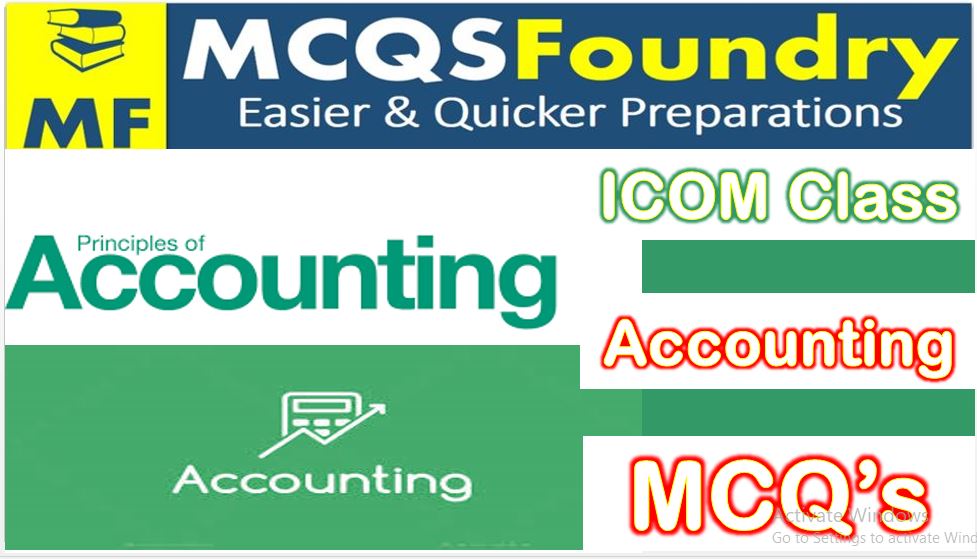MCQsFoundry.com brings to you 500+ Financial Accounting ICOM Mcqs which are new and latest. These Mcqs are never published on internet so far. For full information about all PPSC / FPSC / CSS / PMS latest jobs visit theiteducation.com

Chapter – 13
Financial Statements
Encircle the most appropriate answer from the following :
1.A statement, which is prepared to ascertain the net income or net loss for period is called:
- Statement of condition
- Position Statement
- Bank Reconciliation Statement
- Financial Statement
2.A statement, which is prepared to know the financial position of a business is called.
- Statement of condition
- Balance sheet
- Position statement
- All of above
(c) The inflow of assets in return for services performed or products delivered during a period is:
- Revenue
- Asset
- None of these
- Non current asset
4. Cost incurred to generate revenue is called:
- Cost
- Revenue
- Liability
- Expense
5.The amount by which the revenue for a particular period of time exceed from expenses incurred to generate them is called
- Net income
- Gross income
- Expenses.
- Revenue
6. Sales are equal to:
- Cost of goods sold + profit
- Gross profit cost of goods sold
- Cost of goods sold gross profit
- None of these
7. Cost of goods sold is equal to:
- Sales-purchases
- Purchases +Closing Stock- Returns outwards
- Opening stock- closing stock + Purchases + Returns inwards
- Opening stock + purchases-Returns outwards closing stock
8.The gross amount of goods sold or services performed during an accounting period ls as
- Purchase
- Net profit
- Sale
- Gross profit
9. Net purchases are equal to:
- Sales-Returns outwards
- Purchases+Returns inwards
- Purchases – Returns outwards
- Purchases – Returns outwards
10.Net sales are equal to:
- Sales-Returns outwards
- Sales – Returns inwards
- Sales + Returns inwards
- Purchases-Returns inwards
11.Which one of the following is a direct expense
- Custom duty
- Wages
- Carriage able
- All of above
12. The margin that is available to cover the other expenses for a period and to yield net income is known as:
- Net profit
- Net sales
- Gross profit
- Cost of goods sold
13.The expenses which are incurred for the generation of revenues from the sales of goods are called:
- Non-operating expenses
- Operating expenses
- Selling expenses
- Administrative expenses
14.All expenses connected with the office and its conduct are called:
- Selling expenses
- Service expenses
- Marketing expenses
- Administrative expenses
15.Net sales-cost of goods sold – operating expenses
- Gross profit
- Cost of goods sold available for sale Gross profit
- Net purchases
- Net operating income
16.Income statement is prepared to ascertain the net result of the business concern under
- American accounting system
- British accounting system
- Cash system of accounting
- None of these
17.Which one of the following is a direct expense?
- None of these
- Advertisement expense
- Traveling expense
- Packing expense
- Manufacturing expense
18.Allowance for discount on account receivable is calculated on the amount of account receivable.
- Before deducting the allowance for doubtful debts
- Left after deducting the allowance for doubtful debts.
- Before deducting the actual bad debts
- None of these
19.Allowance for doubtful debts normally has a:
- Debit balance
- Credit balance
- None of these
- Both debit & credit balance
20.From Business point of view, interest on drawings is:
- An expense
- An asset
- A Liability
- A revenue